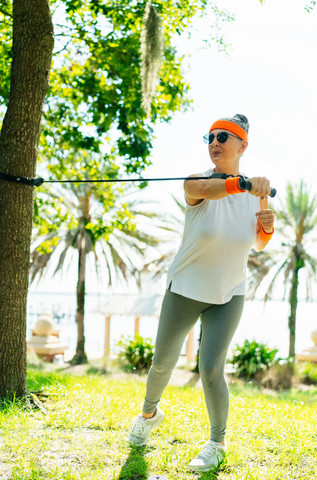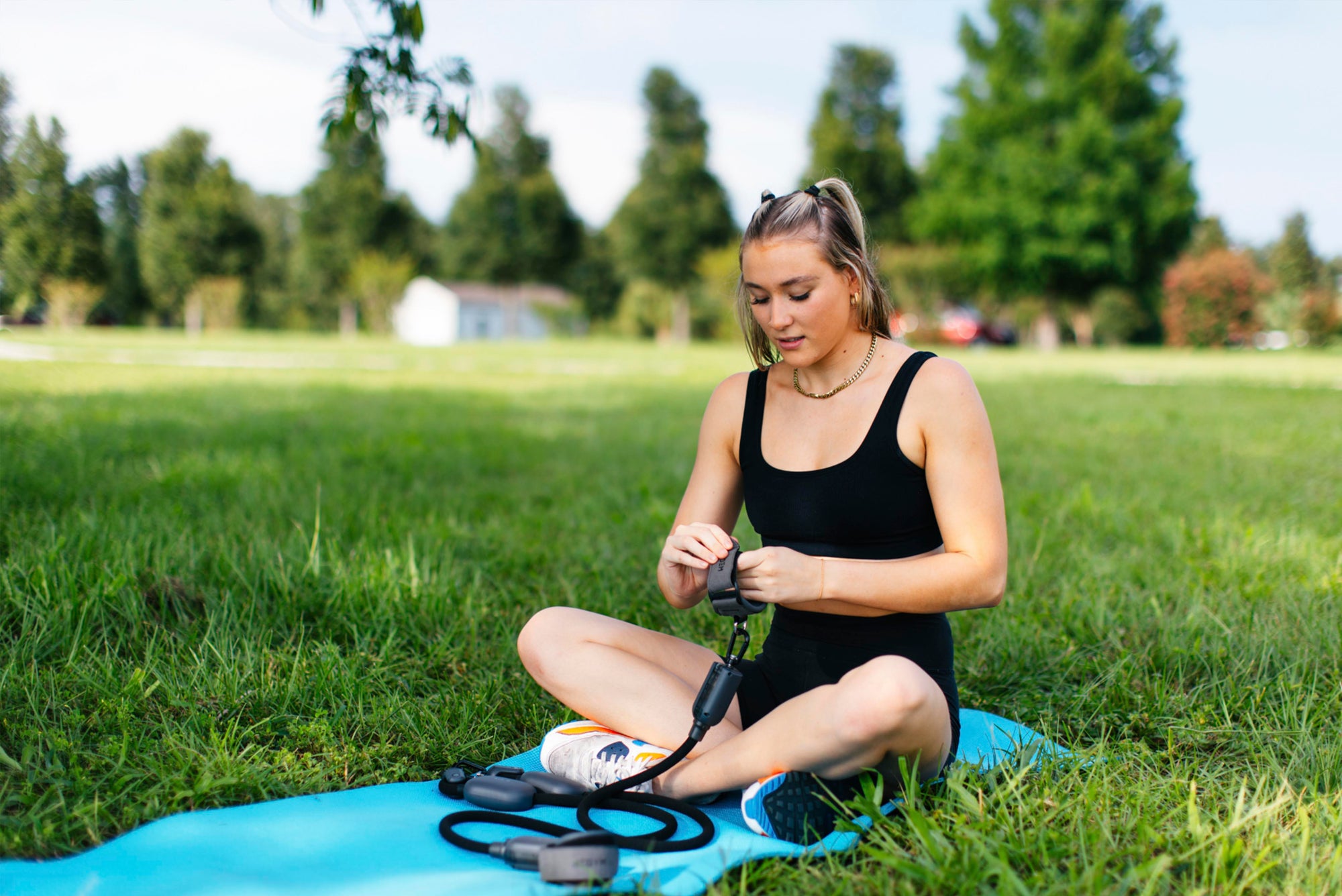Navigation
- Importance of Balance and Coordination Training
- How Resistance Band Training Enhances Balance and Coordination
- Different Difficulty Levels in Resistance Band Training Movements
- The Process of Exercises Considerations and Techniques
- Conclusion
Whether you are an athlete or a usual person, owning good balance and coordination abilities must benefit you. A good knowledge of balance and coordination can reduce the risk of injury, improve your performance in sports, change your posture, and keep you stable in activities. In this regard, a resistance band is a convenient and versatile fitness tool for you. This article focuses on the use of resistance bands to strengthen your balance and coordination, provides different fitness movements suitable for varying difficulty levels, and discusses key considerations and techniques.
Importance of Balance and Coordination Training
Risk Reduction: Exceptional balance and coordination contribute significantly to our stability, which subsequently reduces the likelihood of falls and injuries. This is particularly crucial for older adults and athletes who are more susceptible to such incidents.
Boosting Sports Performance: In sports-basketball, soccer, tennis, skiing, to name a few-excellent balance and coordination play a pivotal role in driving success. These abilities underpin the effectiveness of various movements and techniques.
Posture Improvement: Our day-to-day activities-whether it's standing, walking, or engaging in sports-demand a certain degree of balance and coordination. Having these skills allows us to maintain an upright posture, thereby exuding confidence and grace.
Enhancing Stability in Everyday Activities: Numerous daily tasks, like climbing stairs, tying shoelaces, or carrying objects, necessitate a degree of balance. Superior balance and coordination skills can render these activities more manageable and safer.
How Resistance Band Training Enhances Balance and Coordination
Using the stability of resistance bands: Traditional Resistance bands have elasticity and stability, which can provide support during fitness training to help you control movements better and improve your sense of balance.
Paying attention to core muscle fitness: Many resistance band exercises can help train your core muscle groups, making them more robust and stable. As you know, core muscle groups are very crucial for the balance of the body.
Tailoring training for different difficulty levels: Resistance band training can be personalized based on individual needs, with exercises of varying difficulty levels available for beginners through to advanced practitioners.
A wide range of resistance band courses designed for various difficulty levels, along with resistance options ranging from 10-110lbs, can be found in the WeGym app. Professional coaches within the app guide users on proper breathing techniques and customize the training regimen to match individual fitness levels.
WEGYM provides 200+ training courses developed by internationally certified professional coaches and 10,000 minutes of follow-up training courses covering the whole range from basic to advanced, and the training movements cover chest, shoulder, back, hip, leg, and core. It also supports real-time training data transmission, AI strength monitoring, and a PCMU training scoring system, all powered by intelligent algorithms and technology.
Different Difficulty Levels in Resistance Band Training Movements
Beginner Level
Single-leg standing balance training: Firstly, you should attach the resistance band to your left leg and keep your right leg standing along, maintaining balance for about 30 seconds, and then switch to the other leg slowly.
Front and back steps: Firstly, you should attach the resistance band to both your legs and then step forward and backward, focusing on balance and stability.
Double-arm front raises: First, step on the resistance band, hold both ends with your hands, and perform front raises until shoulder level.
Repeat the above exercises as appropriate for your fitness level and health status.
Intermediate Level
Plank with resistance band on wrists: Firstly, you should place the resistance band on your wrists, try to keep a plank position slowly, maintain balance, and engage the core muscles groups
Side plank leg lifts: Firstly, you should step on the resistance band, lie on your side, support your upper body with one hand, lift the other leg, and perform repeated leg lifts.
Cross walking: Attach the resistance band to your legs, and walk forward with crossing steps, paying attention to balance and stability.
Repeat the above set of exercises according to your fitness level and health.
Advanced Level
Single-leg squats: Attach the resistance band to your legs, and perform single-leg squats, focusing on balance and body stability,
Double-arm bent-over rows: Step on the resistance band, hold both ends with your hands, bend forward, and perform bent-over rowing movements.
Making single-leg jumping movement: Firstly, you should attach the resistance band to your right leg and make your body forward about 15 degrees to jump, paying attention to control your balance of motion.
If you have difficulty understanding the above exercises, consult the WeGym app. It offers various courses, and a professional coach will guide you through the correct movements. You can also find resistance band courses tailored to your fitness level.
The Process of Exercises Considerations and Techniques
Focus Safety: Keep attention on the safety of the resistance band; if it isn't stable, you must stop immediately to avoid injury and accidents.
Adding difficulty Gradually: When you first start to train, you should make a plan which suits your fitness level and avoid exercises with great difficulty.
Maintain stable breathing: During training, maintain even breathing, and avoid breath-holding, as it contributes to better movement efficiency and balance control.
Engage the core muscles: Always engage the core muscles during resistance band training, keeping the abdomen tight to enhance balance and stability.
Take regular breaks: Allow sufficient rest during training sessions to give your body ample time for recovery and avoid over-fatigue.
Conclusion
Balance and coordination are vital skills necessary for our everyday life, which can be effectively honed using resistance bands. The WeGym resistance band has an app that has all kinds of courses and coaches, which can greatly contribute to your training plan. Whether you are a beginner or an advanced trainer, you can discover the most adjustable course for yourself in the APP. The advantages of regular resistance band training in building a more stable and coordinated body are undeniable. So let's make a move to a healthier and more balanced life!





